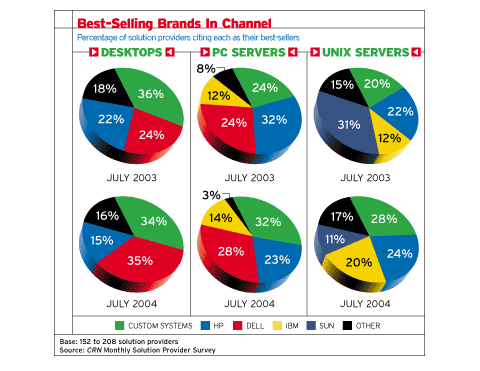Outsourcing Shift

he CRN Monthly Solution Provider Survey reveals a significant change is taking place in the way solution providers are approaching the custom-system market.
In a nutshell, while more solution providers are selling custom desktops, notebooks and servers, fewer are assembling the systems themselves, opting instead to outsource that task to system builders.
The trend was particularly noticeable in desktops, but also held true for notebooks and servers. The percentage of solution providers indicating they build and sell custom desktops dropped from 45 percent in February to 32 percent in July, according to the monthly polling data. Meanwhile, the percentage sourcing custom desktops jumped from 34 percent to 51 percent over the same period.
In some cases, solution providers may be both building and buying custom systems. These individuals are included in the figures above and in the charts, but they are not broken out separately. Future CRN data will provide this breakout.
It is uncertain whether the trend is cyclical or long-term as February was the first month that the CRN poll began tracking build vs. buy trends. In any case, it is good news for system builders and distributors that cater to the channel, providing an extra boost to an already rising market for systems.
| AD | |
|---|---|
| id | unit-1659132512259 |
| type | Sponsored post |
Over the past year, as indicated in the second set of charts, custom desktops have held onto a fairly steady share of the market. In July, 34 percent of solution providers cited custom systems as their best-selling brand, compared with 36 percent a year earlier. Dell became the best-selling brand at 35 percent, up significantly from 24 percent.
Custom-built servers, meanwhile, have been hot. In the PC server category, custom systems rose to 32 percent in July, up from 24 percent a year earlier. And in Unix/RISC servers, 28 percent cited custom systems as their best-selling brand, up from 20 percent a year earlier. Hewlett-Packard and IBM also made gains, while Sun Microsystems dropped from 31 percent to 11 percent.




Published for the Week Of October 4, 2004